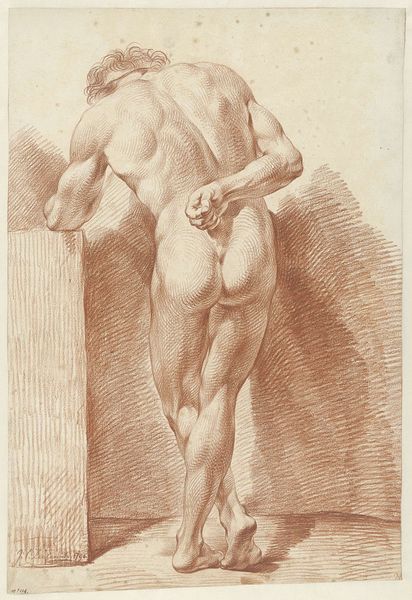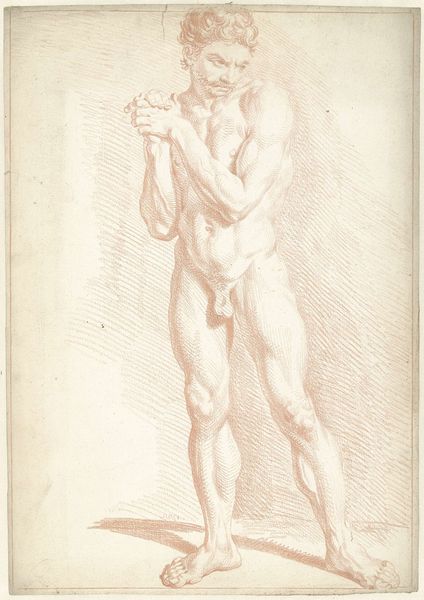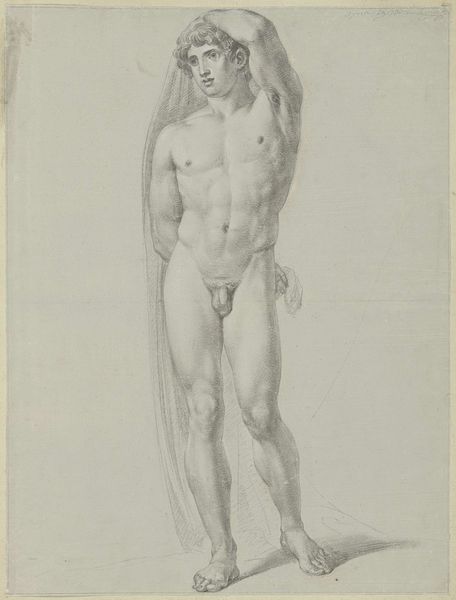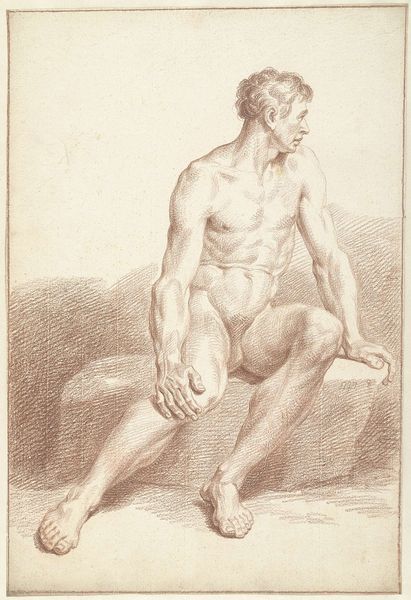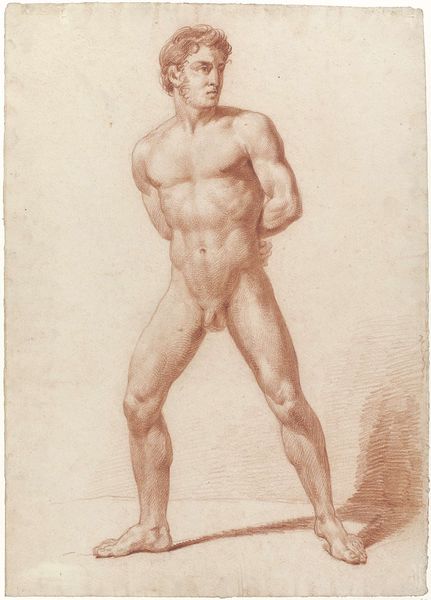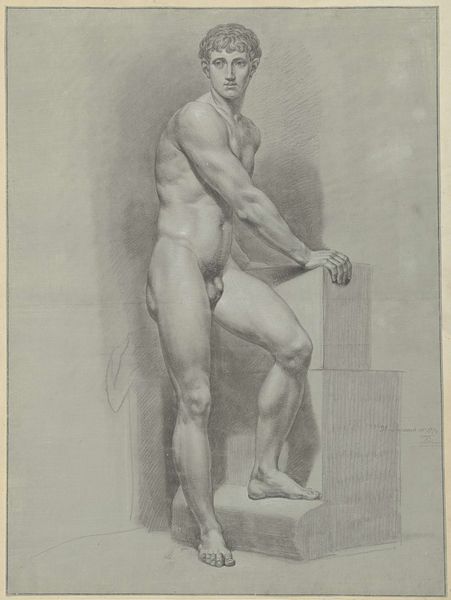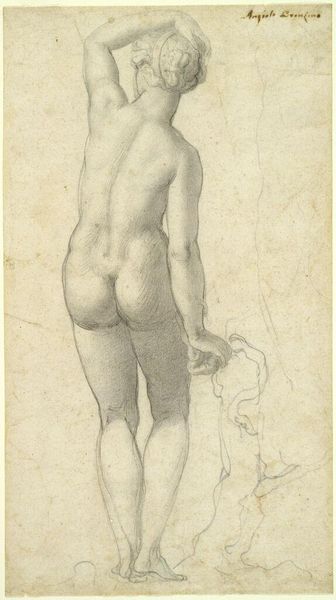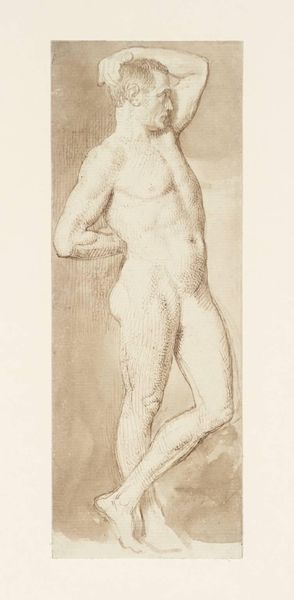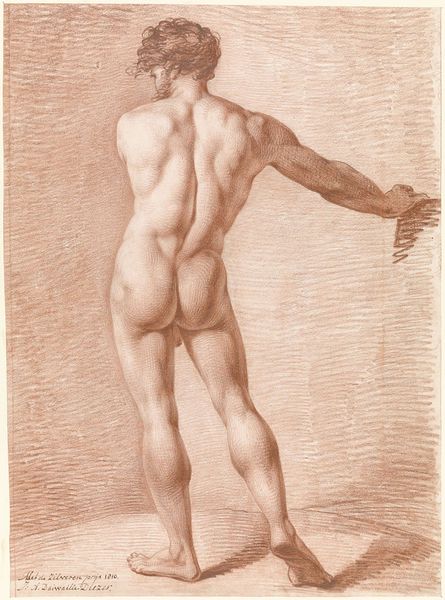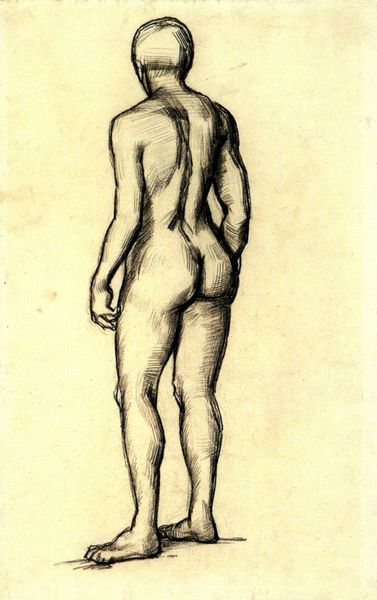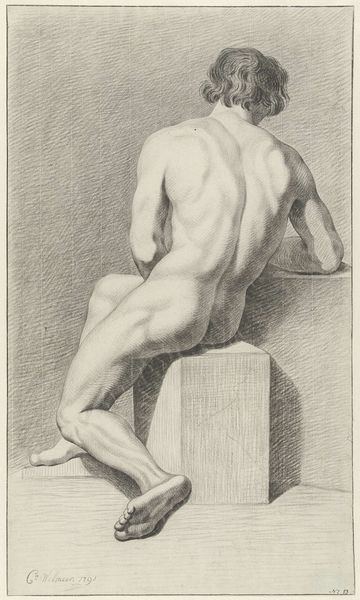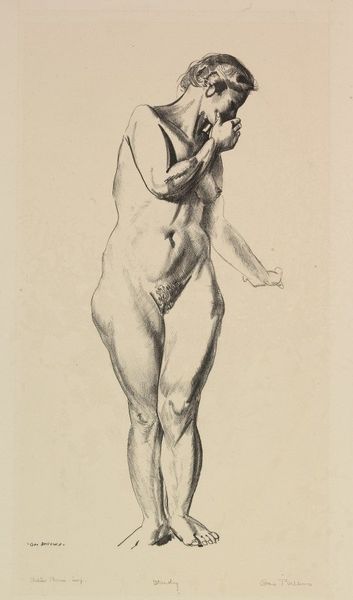
Staand mannelijk naakt, op de rug gezien, steunend op de rechterknie 1784 - 1798
0:00
0:00
drawing, charcoal
#
pencil drawn
#
drawing
#
pencil sketch
#
charcoal drawing
#
figuration
#
form
#
portrait reference
#
pencil drawing
#
romanticism
#
portrait drawing
#
charcoal
#
academic-art
#
nude
Dimensions: height 536 mm, width 332 mm
Copyright: Rijks Museum: Open Domain
Curator: Here we have Hendrik de Flines's "Standing Male Nude, Seen from the Back, Leaning on the Right Knee," dating from around 1784 to 1798. The medium appears to be primarily charcoal and pencil. Editor: Wow. The first thing that strikes me is this incredible vulnerability. He's literally exposed, yes, but it's the slumped posture and averted gaze. He looks burdened. Curator: Precisely. The artist masterfully uses line and shadow to emphasize the musculature of the back, creating a dynamic interplay of light and form. Consider, for example, the tension in the trapezius muscles and how they resolve into the deltoids. Editor: It’s almost melancholic. The academic precision gives way to… what? A whisper of Romanticism? That red chalk… it looks like he's blushing with shame or exhaustion. Like some god who has fallen to earth. Curator: The red chalk indeed contributes significantly. The restrained palette allows for an emphasis on tonal variation, crucial for delineating depth and volume. We see how de Flines employed hatching and cross-hatching to sculpt the figure. Editor: Right! Look at the density around the spine versus the subtle feathering near the buttocks—that textural difference really animates the figure. What do you make of the almost complete lack of context? It really puts him in his own psychological space. Curator: An excellent observation. The neutral background serves to isolate the figure, emphasizing its formal qualities. This work prioritizes the idealized male form in line with the classical aesthetic of the time. A clear study in form. Editor: Yes, but... There is also the undeniable sense of intimacy the artist evokes. The man becomes, momentarily, our own intimate and flawed reflection, regardless of any academic tradition. It is his back we see; yet, somehow, it mirrors our feelings of vulnerability. Curator: A perspective well considered. De Flines's technique is remarkable and worth studying, undoubtedly. Editor: Ultimately, the artist succeeds in conveying a human fragility that remains touching and powerful to this day. Thank you for pointing me towards a new angle on looking at old masters!
Comments
No comments
Be the first to comment and join the conversation on the ultimate creative platform.
